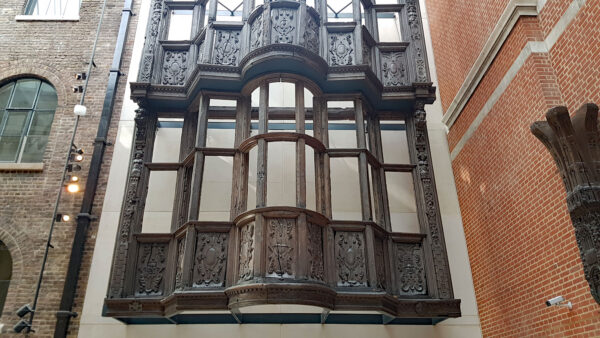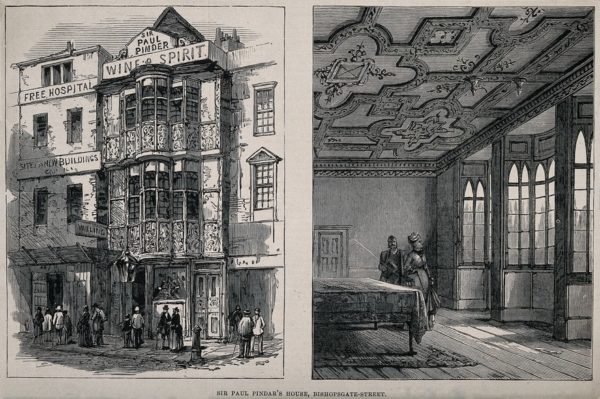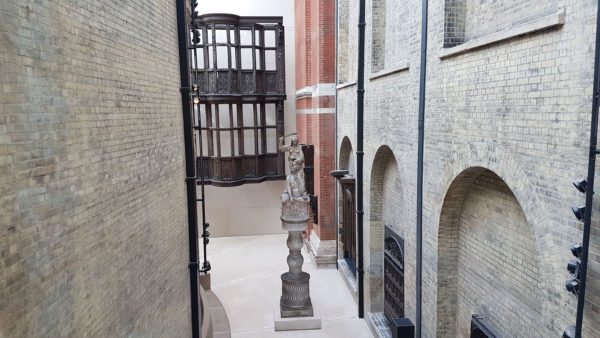(something to see when the museum reopens)
Hanging from a wall in the V&A is a grandly decorated frontage from an old house – just the frontage floating eerily in the void.
This is Sir Paul Pindar’s House — one of the richest decorated buildings of its time, and one of the few timber houses that survived the Great Fire of London.
Built around 1600, it’s thought that the house was above a shop, as was common at the time, and it’s known that the first floor contained a richly decorated reception room with moulded plaster ceiling and chimney place.
One of the more distinctive aspects, for the time, was the size of the windows, which are thought to have been filed with imported clear glass, or possibly due to the cost, greenish English glass, which was much cheaper.
The decoration on the panels probably came from a pattern book, but front and centre is the crest of the City of London.
The facade is however a prepack – an early Ikea job. It was constructed somewhere else, then delivered and reassembled on site. Tragically, the facade was painted, but when it was delivered to the V&A, they stripped the paint away thinking that it would have originally been plain and the paint was a later addition. Scholars now know that was wrong.
The building was on the edge of the city, in Bishopsgate, roughly where Bishopsgate Tower is today, and grand enough to be used by the Venetian ambassador in 1617 for his home. It was later owned, unsurprisingly for its name, by Sir Paul Pindar, who spent most of his life as a merchant and diplomat in Turkey, which also made him enormously rich.
Knighted by King James I, he was a heavy lender to King Charles I. However, he lent badly, King Charles I never repaid his debts, trade suffered during the civil war, and when he died in 1650, Paul Pindar was deep in debt himself.
After his death, and the devastation of the Great Fire of London in 1666, it’s thought that the upper floors were divided into small rooms for rent, and the ground floor became a pub, Sir Paul Pindar’s Head.
It survived until 1890, when it was threatened with demolition – for the arrival of the railways, and it sat right where Liverpool Street station was looking to expand. Fortunately recognised for its historical rarity, while the building was torn down, the facade was preserved and handed to the V&A.
It was reassembled, and at the time, had the windows left intact, but it was moved in 2006 to its current location, and the glass panels removed, which in a way is good, because they were later additions, but in a way bad, as it’s turned a fully formed facade into what looks today like just a scaffold.
One point to note though, while it floats up in the air above our heads, that’s roughly where it would have been originally as well, for this is the first floor upwards, and we mere humble folk would have been going into the pub on the ground floor.
Sadly, the pub isn’t there for us to enjoy.













Forget Ikea pre-pack – MFI a British company was there with pre-pack furniture well before them!
I’ve visited the V&A several times and when safe to do so, will look for this